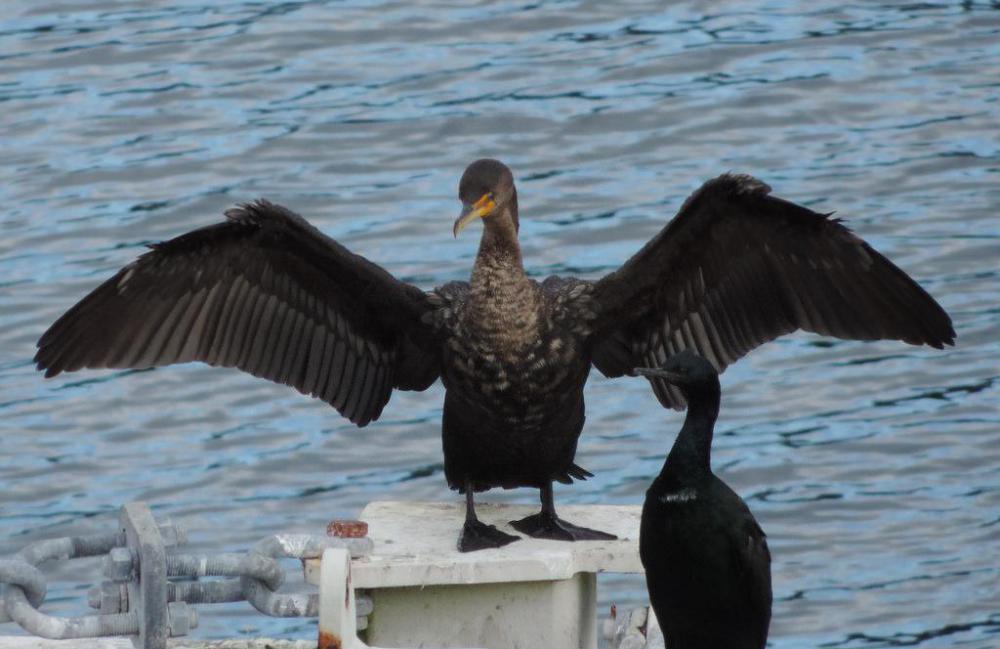At AllThingsNature, we're committed to delivering accurate, trustworthy information. Our expert-authored content is rigorously fact-checked and sourced from credible authorities. Discover how we uphold the highest standards in providing you with reliable knowledge.
What is a Lemon Sole?
A lemon sole is a flat fish that belongs to the Pleuronectidae family and lives in shallow waters off the coast of the northern Atlantic Ocean. It is dark green to ruddy brown in color, and sometimes spotted, with a white underside. Like other flounders, it has a small mouth, eyes only on the left side of its head, and swims on its right side. These types of fish are often called winter flounder; in cold weather they migrate close to shore, where they stay until spring. Other common names include English sole and southern lemon sole.
The lemon sole spawns from winter to early spring in shallow areas and then leaves for deeper water. The female lemon sole lays as many as 600,000 eggs, although most of them do not hatch. They are laid in clusters and hatch with two to three weeks. Unlike adults, their eyes are on the right side of their heads; upon hatching, however, they migrate to the left side just a few weeks later. These hatchlings grow to be about 4 inches long (100 mm) during their first year of life and will reach as much as 2 feet in length (60 cm) at maturity.

Survival is not easy for these fish because they are preyed upon by many other species. The striped bass, mackerel, winter skate, and toadfish all feed upon their eggs and larvae. Mature lemon sole are eaten by the Atlantic cod, monkfish, bluefish, and many others. Birds such as the striped sea robin, gulls, cormorants, and sea ravens prey upon them as well.

Although omnivorous, their diet consists mainly of shrimp, worms, small clams, and other invertebrates. Most of the plants they consume seem to be eaten accidentally. The diet varies based on what is available to them. They feed only during the daytime and are all but completely inactive at night. Very little food is consumed by this flatfish during the winter, and they may stop eating altogether this time of the year.
These fish are very sensitive to polluted waters and may stop feeding in areas contaminated with oil. Oily sediment in the water may lead to lymphocystitis or fin rot and can be fatal to the lemon sole. Pesticides in the water also lead to high mortality rates in both the larvae and mature fish.
Several thousand tons of these delicious fish are harvested each year and consumed throughout the world. They are heavily fished all the way down the eastern seaboard of the United States. Measures are now being taken to ensure that areas with high lemon sole populations are not being overfished to avoid possible endangerment in the future.
Frequently Asked Questions
What exactly is a Lemon Sole?
Lemon Sole is a flatfish species, scientifically known as Microstomus kitt, found primarily in the North Atlantic Ocean. Despite its name, it is not a true sole but rather a member of the right-eye flounder family. It is prized for its delicate, mild flavor and fine, flaky texture, making it a favorite among seafood enthusiasts.
How can you identify a Lemon Sole?
Lemon Sole can be identified by its oval body shape and small head, with both eyes located on the right side of its body. Its top side is usually a light brown color with a yellowish hue, which can sometimes appear lemon-like, hence the name. The underside is white, helping it blend with the seabed.
Where does Lemon Sole typically live and what is its habitat?
Lemon Sole is commonly found in the cooler waters of the North Atlantic, from the Barents Sea to the Bay of Biscay. It prefers sandy or muddy seabeds where it can camouflage effectively, at depths ranging from shallow waters to about 200 meters. They are benthic, living close to the ocean floor.
What does the Lemon Sole eat?
The diet of Lemon Sole consists mainly of small invertebrates, such as polychaete worms, crustaceans, and mollusks. They are bottom feeders, using their camouflaged appearance to ambush prey. Their small mouths and sharp teeth are well-adapted for suction feeding on these benthic organisms.
Is Lemon Sole an important species for fisheries?
Yes, Lemon Sole is considered an important species for commercial fisheries, especially in Europe. It is highly valued for its taste and texture, often fetching higher market prices. Sustainable fishing practices are crucial to maintaining Lemon Sole populations, as overfishing can deplete stocks and disrupt marine ecosystems.
How is Lemon Sole typically prepared and cooked?
Lemon Sole is versatile in the kitchen, suitable for various cooking methods including grilling, baking, and pan-frying. Chefs often recommend simple preparations to highlight its delicate flavor, such as lightly seasoning with herbs and butter. It's also popularly served with a squeeze of lemon to enhance its subtle, sweet taste.
AS FEATURED ON:
AS FEATURED ON:












Discuss this Article
Post your comments